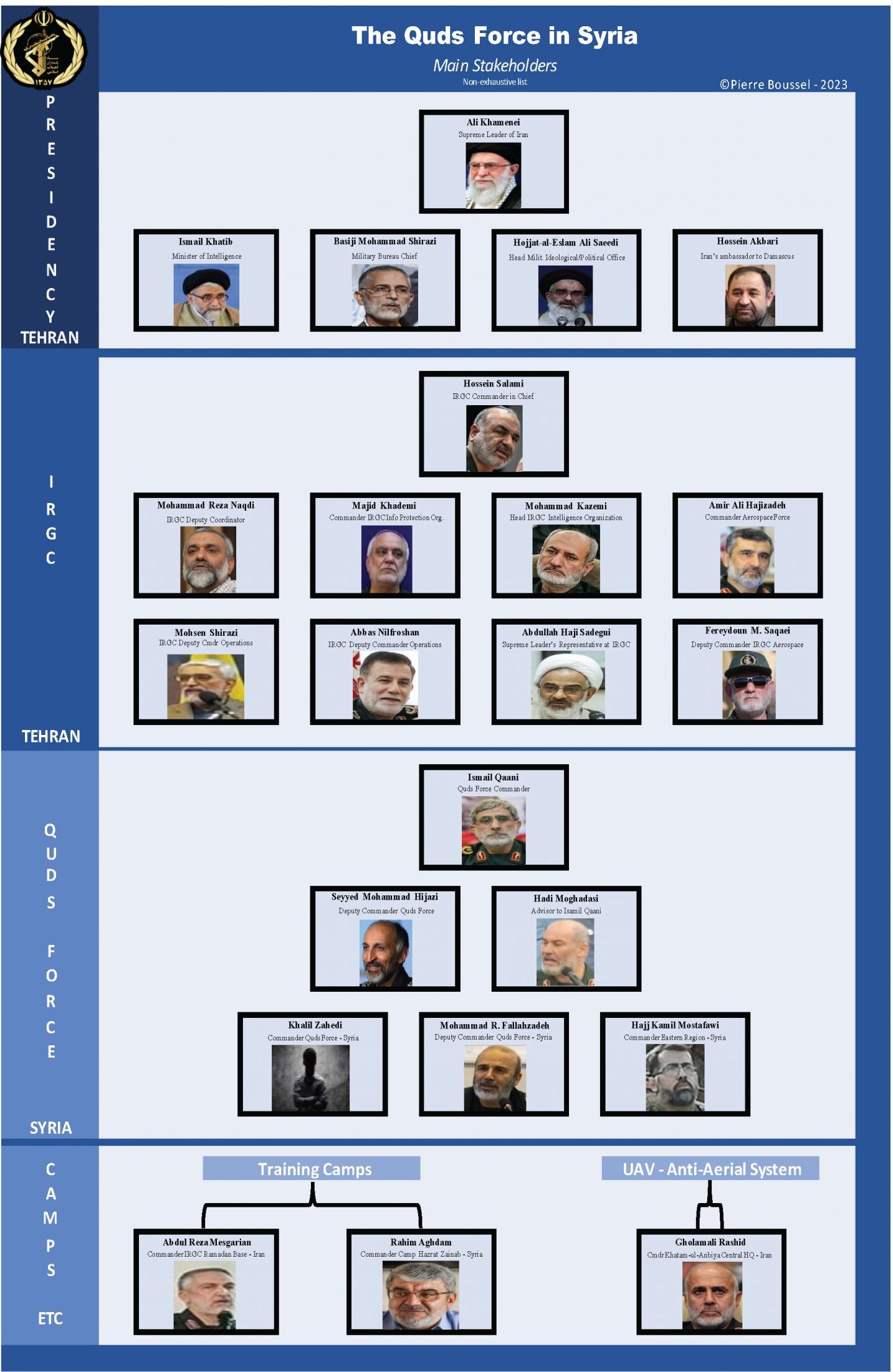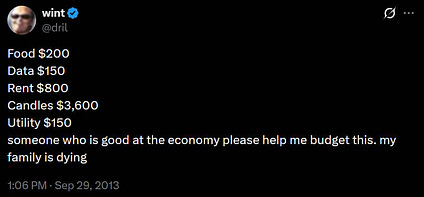In Iran’s Broken Economy, Workers Fight to Survive on Wages Below the Poverty Line – National Council of Resistance of Iran – NCRI

Economic Hardship in Iran: A Report on Challenges to Sustainable Development Goals
Introduction: The Widening Gap Between Wages and Living Costs
This report analyzes the severe economic conditions facing the Iranian workforce, highlighting the significant challenges to achieving multiple Sustainable Development Goals (SDGs). Chronic inflation and stagnant wages have created a subsistence crisis, directly undermining progress on SDG 1 (No Poverty) and SDG 8 (Decent Work and Economic Growth). The disparity between income and the cost of living has forced a majority of the working class into conditions where basic needs are unmet, constituting a structural failure to provide a decent standard of living.
Analysis of Key Economic Indicators and SDG Impacts
The economic environment in Iran presents critical barriers to sustainable development. Key data reveals a profound disconnect between official wage structures and the actual cost of survival, impacting several SDGs:
- SDG 1 (No Poverty): The minimum monthly wage, including allowances, ranges from 13 to 15 million tomans for a family with two children. This is less than one-third of the estimated 50 million tomans required for a basic standard of living in Tehran, pushing millions of households far below the poverty line.
- SDG 2 (Zero Hunger): Food price inflation reached 57.9% in September 2025, with staple items like bread soaring by 94.3%. The cost of a basic food basket for a family of three is estimated at nearly 20 million tomans per month, exceeding the total minimum wage and severely compromising food security.
- SDG 11 (Sustainable Cities and Communities): Housing costs consume between 35% and 70% of a worker’s income, far exceeding the international 30% crisis threshold. This lack of affordable housing forces families into debt and relocation, undermining the goal of safe and adequate housing for all.
- SDG 4 (Quality Education): The rising cost of essential school supplies, estimated at 7–8 million tomans per child, creates a significant financial barrier, jeopardizing access to quality education for children from working-class families.
Systemic Failures and Governance Issues
The economic crisis is attributed to systemic governance failures that directly contravene the principles of SDG 16 (Peace, Justice and Strong Institutions). The primary drivers of hyperinflation and economic instability include:
- Monetization of Deficits: The state has resorted to printing money to cover fiscal deficits resulting from mismanagement and corruption, leading to a collapse in the currency’s value.
- Ineffective Policy Responses: Price controls and propaganda have failed to address the root causes of inflation, indicating a lack of effective and accountable institutions.
- Erosion of Public Trust: Sanctions and continued fiscal mismanagement have worsened public economic expectations, accelerating inflation and market instability.
Socio-Economic Consequences and Human Impact
The economic conditions have severe consequences for the well-being and productivity of the workforce, further impeding progress on key development goals.
- Impact on SDG 3 (Good Health and Well-being): Workers are forced to sacrifice nutrition and healthcare to cover essential costs. The necessity of working multiple jobs—a reality for over 60% of the workforce—leads to physical exhaustion and mental distress.
- Impact on SDG 8 (Decent Work): The current environment is characterized by precarious labor, where work does not guarantee a life of dignity or security. Real wages have fallen to below 200 US dollars per month, reflecting a failure to provide decent work and fair remuneration.
- Impact on SDG 10 (Reduced Inequalities): The crisis disproportionately affects the working class, widening the gap between different societal segments. The systematic marginalization of workers represents a profound structural inequality.
Conclusion: A Structural Crisis Impeding Sustainable Development
The economic situation for Iranian workers is not merely a cyclical downturn but a structural crisis rooted in governance failures. This crisis presents a formidable obstacle to the achievement of the Sustainable Development Goals, particularly those related to poverty, hunger, health, education, decent work, housing, and institutional justice. The inability of wages to cover basic living costs has created a humanitarian issue where work no longer ensures survival, but merely postpones collapse, indicating a systemic failure to uphold the principles of equitable and sustainable development.
Analysis of Sustainable Development Goals in the Article
1. Which SDGs are addressed or connected to the issues highlighted in the article?
-
SDG 1: No Poverty
- The article’s central theme is the struggle of Iranian workers to survive on wages far below the poverty line. It explicitly states that for millions, “wages no longer sustain life” and that they are fighting for “the right to exist.”
-
SDG 2: Zero Hunger
- The article highlights extreme food price inflation, making basic staples unaffordable. It mentions that “food prices rose 57.9 percent,” bread soared by “94.3 percent,” and a family of three needs “nearly 20 million tomans per month” for food alone, an amount exceeding their total income. This directly relates to the inability to secure sufficient and nutritious food.
-
SDG 8: Decent Work and Economic Growth
- The core issue discussed is the lack of decent work. The article describes a “widening gap between wages and survival,” with the minimum wage being less than a third of what is required to live. It also notes that over 60% of workers hold multiple jobs, leading to “exhaustion, declining productivity, and family disintegration,” which is the opposite of decent and productive employment.
-
SDG 10: Reduced Inequalities
- The article frames the economic hardship as a “structural injustice” and a result of “deliberate policies.” It states that workers, “the backbone of Iran’s production—are being systematically marginalized” under a regime marked by “corruption, resource plunder, and international isolation,” pointing to a severe inequality in the distribution of economic resources.
-
SDG 11: Sustainable Cities and Communities
- A significant portion of the article is dedicated to the housing crisis in Tehran. It details how housing has become “the greatest crisis for workers,” consuming “35–70 percent of a worker’s income,” which is far beyond the international 30% threshold. This unaffordability leads to “widespread debt, loans, and forced relocation to poorer suburbs,” indicating a lack of access to adequate and affordable housing.
2. What specific targets under those SDGs can be identified based on the article’s content?
-
Target 1.2: By 2030, reduce at least by half the proportion of men, women and children of all ages living in poverty in all its dimensions according to national definitions.
- The article directly addresses this by comparing the official minimum wage (10.3 million tomans) to the estimated cost of living (50 million tomans) and the “basic subsistence basket” (25-30 million tomans), showing that a large portion of the working population lives in poverty by any national definition.
-
Target 2.1: By 2030, end hunger and ensure access by all people, in particular the poor and people in vulnerable situations, including infants, to safe, nutritious and sufficient food all year round.
- The article demonstrates the failure to meet this target by detailing the prohibitive costs of basic foods like chicken, rice, red meat, lentils, and beans. The fact that food alone requires nearly 20 million tomans a month for a family makes it inaccessible for workers earning 13-15 million tomans.
-
Target 8.5: By 2030, achieve full and productive employment and decent work for all women and men, including for young people and persons with disabilities, and equal pay for work of equal value.
- The article’s focus on wages that are insufficient for survival (“less than one-third of what is required”) and the need for workers to take multiple jobs to the point of exhaustion directly contradicts the principle of “decent work.” The real wage of “less than 200 dollars per month” exemplifies the lack of pay that provides a decent living.
-
Target 10.4: Adopt policies, especially fiscal, wage and social protection policies, and progressively achieve greater equality.
- The article critiques the regime’s policies, stating the economic crisis is “the result of deliberate policies” where “wages remain frozen” despite galloping inflation. It also mentions the regime’s resort to “monetizing the deficit, printing money to cover costs,” which is a fiscal policy that disproportionately harms the poor and working class, thus increasing inequality.
-
Target 11.1: By 2030, ensure access for all to adequate, safe and affordable housing and basic services and upgrade slums.
- This target is directly relevant to the section “Housing: the unpayable burden.” The article provides specific data on rent and deposit costs in Tehran, showing that housing is unaffordable. It states that families spend “over 70 percent of income on housing,” forcing them into debt and relocation, which is a clear failure to ensure access to adequate and affordable housing.
3. Are there any indicators mentioned or implied in the article that can be used to measure progress towards the identified targets?
-
For Target 1.2 (Poverty):
- Indicator: Proportion of population living below the national poverty line.
- Implied Measurement: The article provides the data points to calculate this. The poverty line is defined by the “basic subsistence basket” (25-30 million tomans) or the overall cost of living (50 million tomans). The income of a typical worker (13-15 million tomans) is clearly below this line. The ratio of income to the cost of living serves as a direct indicator of poverty depth.
-
For Target 2.1 (Hunger):
- Indicator: Prevalence of food insecurity.
- Implied Measurement: The article provides several price-based indicators: point-to-point inflation (45.3%), food price inflation (57.9%), and bread price inflation (94.3%). It also gives specific costs for staples (e.g., “a kilo of chicken now costs 115,000 tomans”). The ratio of food costs (20 million tomans) to a worker’s income is a stark measure of food insecurity.
-
For Target 8.5 (Decent Work):
- Indicator: Average hourly/monthly earnings of employees.
- Implied Measurement: The article specifies the monthly minimum wage (10.3 million tomans) and the average worker’s earnings with benefits (13-15 million tomans). It also provides a real wage indicator, converting the earnings to “less than 200 dollars per month.” The stagnation of these wages while the cost of living has “risen 2.7 times” is another key performance indicator.
-
For Target 10.4 (Inequality):
- Indicator: Labor share of GDP or income.
- Implied Measurement: While not stating the national labor share of GDP, the article implies a sharp decline. The fact that “while the minimum cost of living has risen 2.7 times, wages remain stagnant” indicates that the share of national income going to labor is shrinking dramatically compared to inflation and other economic factors.
-
For Target 11.1 (Affordable Housing):
- Indicator: Proportion of income spent on housing.
- Implied Measurement: The article explicitly states that families spend “35–70 percent of a worker’s income” on housing. This figure can be directly used as an indicator, especially when compared to the international affordability threshold of 30%. Specific rent figures (“monthly rent of 3–14 million” or “exceed 20 million”) also serve as direct data points.
4. Table of SDGs, Targets, and Indicators
| SDGs | Targets | Indicators |
|---|---|---|
| SDG 1: No Poverty | 1.2: Reduce poverty in all its dimensions according to national definitions. |
|
| SDG 2: Zero Hunger | 2.1: End hunger and ensure access to safe, nutritious and sufficient food. |
|
| SDG 8: Decent Work and Economic Growth | 8.5: Achieve full and productive employment and decent work for all. |
|
| SDG 10: Reduced Inequalities | 10.4: Adopt fiscal, wage, and social protection policies to achieve greater equality. |
|
| SDG 11: Sustainable Cities and Communities | 11.1: Ensure access for all to adequate, safe and affordable housing. |
|
Source: ncr-iran.org

What is Your Reaction?
 Like
0
Like
0
 Dislike
0
Dislike
0
 Love
0
Love
0
 Funny
0
Funny
0
 Angry
0
Angry
0
 Sad
0
Sad
0
 Wow
0
Wow
0















































/environment-climate-change-and-health-(ech)/water-sanitation-hygiene-and-health-(wsh)/landfill-tuvalu-36092.tmb-1200v.jpg?sfvrsn=5c21fe40_1#)


.jpg.webp?itok=0ZsAnae9#)
























